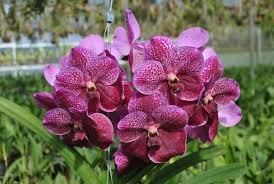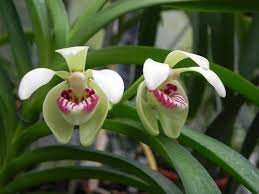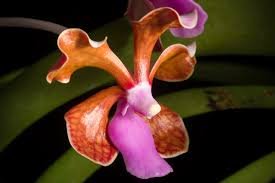# Do Donut Collars Help with Anxiety in Dogs?
 When it comes to caring for our canine companions, ensuring their comfort and well-being is paramount. Anxiety in dogs can manifest in various forms, including excessive barking, destructive behavior, and even physical symptoms like panting or trembling. As pet owners seek effective solutions to manage their dogs’ anxiety, donut collars have emerged as a popular option. These soft, cushioned collars not only provide physical support but may also play a role in alleviating anxiety. This article will explore the connection between donut collars and canine anxiety, examining how they function, their benefits, and considerations for use.
When it comes to caring for our canine companions, ensuring their comfort and well-being is paramount. Anxiety in dogs can manifest in various forms, including excessive barking, destructive behavior, and even physical symptoms like panting or trembling. As pet owners seek effective solutions to manage their dogs’ anxiety, donut collars have emerged as a popular option. These soft, cushioned collars not only provide physical support but may also play a role in alleviating anxiety. This article will explore the connection between donut collars and canine anxiety, examining how they function, their benefits, and considerations for use.
## Understanding Canine Anxiety
Before diving into the specifics of donut collars, it’s essential to understand what canine anxiety is and how it affects dogs. Canine anxiety can arise from a range of situations, including:
– **Separation Anxiety:** Many dogs experience distress when left alone, leading to behaviors such as whining, barking, or destructive actions.
– **Fear-Based Anxiety:** Loud noises, like thunder or fireworks, can trigger fear responses in dogs. They may hide, tremble, or seek comfort during these events.
– **Social Anxiety:** Some dogs feel uneasy in social situations, whether meeting new people, encountering other dogs, or visiting busy environments.
– **Post-Traumatic Stress Disorder (PTSD):** Dogs that have experienced trauma may show signs of anxiety long after the event, making them more sensitive to stimuli.
Recognizing the signs of anxiety is crucial for effective intervention. Common indicators include:
– Excessive barking or whining
– Destructive behavior, such as chewing or digging
– Pacing or restlessness
– Loss of appetite or refusal to eat
– Hiding or seeking solitude
– Panting, drooling, or shaking
By understanding these signs, pet owners can take steps to address their dogs’ anxiety and improve their overall well-being.
## What Are Donut Collars?
Donut collars, often referred to as inflatable collars or soft e-collars, are designed to prevent dogs from accessing certain areas of their bodies, particularly wounds or surgical sites. Unlike traditional Elizabethan collars, which can be rigid and uncomfortable, donut collars offer a more forgiving, cushioned alternative.
### Design and Functionality
The primary features of donut collars include:
– **Soft Exterior:** Most donut collars are made from fabric, making them more comfortable for dogs to wear compared to plastic cones. This softness can help reduce stress and anxiety, especially for dogs sensitive to discomfort.
– **Inflatable Structure:** Many donut collars are inflatable, allowing for adjustable firmness. This feature helps to create a snug fit without being overly restrictive.
– **Supportive Design:** The circular shape provides a supportive barrier around the dog’s neck, preventing them from licking or biting at injuries while allowing for greater freedom of movement.
### How Donut Collars Work
The primary function of donut collars is to act as a barrier to prevent dogs from accessing their wounds or surgical sites. By doing so, they can help facilitate the healing process, allowing the affected area to recover without interference. However, their role in managing anxiety is an area of growing interest among pet owners and veterinarians alike.
## The Connection Between Donut Collars and Anxiety Relief
### Physical Comfort and Reduced Stress
One of the primary ways donut collars may help with anxiety is through the comfort they provide. Traditional cone collars can be bulky and restrictive, leading to discomfort and stress for the dog. In contrast, donut collars offer several advantages:
– **Comfortable Fit:** The soft fabric and inflatable structure allow for a more comfortable fit around the dog’s neck, reducing the chances of irritation and stress. A comfortable dog is likely to feel less anxious, especially during recovery periods.
– **Freedom of Movement:** Donut collars typically allow for a greater range of motion compared to traditional cones, enabling dogs to move around more freely. This freedom can help reduce feelings of confinement and anxiety.
– **Encouragement to Relax:** Many dogs find the sensation of a soft collar soothing. Just as humans may find comfort in a cozy blanket, dogs may feel more secure wearing a donut collar, which can help them relax in stressful situations.
### Safety and Security
Dogs often seek comfort in secure environments, especially when feeling anxious. Donut collars can provide a sense of safety by offering a barrier that protects their wounds and injuries while allowing them to feel snug and supported.
– **Familiarity with the Collar:** If a dog has worn a donut collar during a previous experience, they may associate it with safety and comfort, leading to reduced anxiety during subsequent uses.
– **Encouragement of Positive Behaviors:** The comfort and security provided by donut collars may promote positive behaviors, allowing dogs to feel more at ease during recovery or stressful situations.
### Behavior Modification
In some cases, donut collars can help facilitate behavior modification by allowing dogs to feel more comfortable in specific environments or situations. For instance, if a dog experiences anxiety during vet visits, wearing a donut collar might provide additional comfort and security, reducing their overall stress levels.
– **Positive Reinforcement:** Pet owners can use positive reinforcement techniques while their dog wears the donut collar. Rewarding calm behavior while wearing the collar can help the dog associate it with positive experiences, reducing anxiety over time.
### Combined Approaches
While donut collars can play a role in reducing anxiety, they are most effective when used in conjunction with other anxiety management techniques. Some strategies to consider include:
– **Behavioral Training:** Implementing positive reinforcement training methods can help address specific anxiety triggers. For example, if a dog is anxious about meeting new people, gradual exposure combined with positive reinforcement can help desensitize them to the experience.
– **Calming Aids:** Consider using calming aids such as anxiety wraps, pheromone diffusers, or calming supplements alongside the donut collar to provide additional support.
– **Consistent Routines:** Establishing a consistent routine can help dogs feel more secure and less anxious. This includes regular feeding times, walks, and playtime, which can create a sense of stability.
## Practical Considerations for Using Donut Collars
### Choosing the Right Donut Collar
Not all donut collars are created equal, and selecting the right one for your dog is essential for ensuring both comfort and effectiveness. Here are some factors to consider:
– **Size and Fit:** Ensure the collar fits your dog properly. An ill-fitting collar can cause discomfort or restrict movement, potentially exacerbating anxiety.
– **Material:** Opt for a collar made from soft, breathable materials to maximize comfort.
– **Adjustability:** Some donut collars have adjustable straps or inflation options, allowing for a customized fit that can accommodate your dog’s unique needs.
### Monitoring Your Dog’s Behavior
When introducing a donut collar to your dog, monitor their behavior closely. Look for signs of distress or discomfort, and be prepared to make adjustments if necessary. It’s essential to ensure that the collar is providing the intended comfort without causing additional anxiety.
– **Check for Signs of Discomfort:** Watch for signs such as excessive scratching at the collar, difficulty eating or drinking, or attempts to remove the collar. If any of these behaviors occur, reassess the collar’s fit and comfort.
– **Provide Positive Reinforcement:** Encourage positive associations with the collar by rewarding calm behavior with treats or praise. This can help your dog feel more at ease while wearing it.
### Consultation with a Veterinarian
Before using a donut collar to manage anxiety, consult with your veterinarian. They can provide guidance tailored to your dog’s specific needs and recommend complementary strategies for anxiety management.
– **Identify Underlying Issues:** Your veterinarian can help determine if there are underlying health issues contributing to your dog’s anxiety and recommend appropriate treatments or interventions.
– **Explore Additional Options:** In some cases, your veterinarian may recommend additional behavioral therapies or medications to help manage anxiety more effectively.
## Conclusion
In conclusion, donut collars can be a valuable tool for managing anxiety in dogs, particularly in situations where comfort and security are paramount. Their soft design, adjustable fit, and supportive structure may help alleviate feelings of anxiety during recovery from surgery or in stressful situations. However, they are most effective when used in conjunction with other anxiety management techniques, such as behavioral training and calming aids.
As pet owners, it’s crucial to understand our dogs’ unique needs and respond appropriately. Monitoring their behavior, consulting with a veterinarian, and providing positive reinforcement can significantly enhance the effectiveness of donut collars in alleviating anxiety.
By combining these strategies, we can create a supportive environment that fosters our dogs’ emotional well-being and promotes healing. Whether your dog is recovering from surgery or simply needs a little extra comfort during stressful moments, a donut collar may prove to be an essential tool in your pet care arsenal.
# Do Donut Collars Help with Anxiety in Dogs? (Part 2)
## Additional Insights into Canine Anxiety
To fully understand how donut collars can alleviate anxiety in dogs, it’s crucial to delve deeper into the nature of anxiety in our canine companions.
### The Root Causes of Canine Anxiety
Understanding the root causes of anxiety is vital for determining appropriate interventions. Here are some common triggers of anxiety in dogs:
1. **Lack of Socialization:**
– Dogs that haven’t been adequately socialized during their critical developmental periods may become anxious in new or unfamiliar situations. Early exposure to various people, pets, and environments helps mitigate this risk.
2. **Genetic Predisposition:**
– Certain breeds are more prone to anxiety than others. For instance, breeds like Border Collies and German Shepherds may exhibit higher levels of anxiety due to their intelligence and sensitivity.
3. **Previous Trauma:**
– Dogs that have experienced trauma—such as abuse, abandonment, or severe illness—may develop anxiety that lingers even after the traumatic event has passed. These dogs may need more extensive behavioral modification and support.
4. **Changes in Routine:**
– Dogs thrive on routine. Changes in their daily schedule, such as a new job for the owner, moving to a new home, or the addition of a new family member, can lead to anxiety.
5. **Medical Issues:**
– Underlying medical conditions, such as pain or hormonal imbalances, can contribute to anxiety. Regular veterinary check-ups are essential for identifying and addressing these issues.
### Recognizing Anxiety in Dogs
Understanding how to recognize signs of anxiety in dogs is vital for effectively addressing their needs. While some behaviors are overt, others may be subtle and require careful observation.
#### Common Signs of Anxiety:
– **Vocalization:** Excessive barking, whining, or howling, especially when left alone.
– **Destructive Behavior:** Chewing furniture, digging, or otherwise damaging household items.
– **Physical Symptoms:** Excessive panting, drooling, or trembling.
– **Changes in Appetite:** Refusing to eat or drink, especially in stressful situations.
– **Avoidance Behaviors:** Hiding, cowering, or seeking solitude.
– **Pacing or Restlessness:** Moving in circles or being unable to settle down.
Recognizing these signs can help owners intervene early and prevent anxiety from escalating.
## The Benefits of Donut Collars
Donut collars offer unique benefits that can positively impact dogs experiencing anxiety. While their primary function is to prevent dogs from accessing surgical sites or injuries, they can also contribute to a dog’s emotional well-being in several ways.
### 1. Comfort and Security
One of the most significant advantages of donut collars is the comfort they provide. Unlike traditional e-collars, which can be restrictive and uncomfortable, donut collars offer a more cushioned experience.
– **Soft Material:** Most donut collars are made of soft, fabric materials that reduce irritation and discomfort, helping dogs feel more secure and less anxious.
– **Inflatable Design:** Many donut collars are inflatable, allowing for adjustable firmness. This feature can accommodate different dog sizes and shapes, ensuring a snug yet comfortable fit.
### 2. Encouragement of Positive Associations
The soft and comfortable nature of donut collars can help dogs form positive associations during stressful situations. When a dog wears a donut collar during a calm or happy moment, it can help alleviate anxiety when the collar is needed for recovery.
– **Calm Environments:** Encourage your dog to wear the donut collar in a safe and calm environment. This could be during quiet family time, gentle petting sessions, or while engaging in favorite activities.
### 3. Increased Range of Motion
Donut collars generally allow for a more significant range of motion than traditional cones. This freedom can help reduce feelings of confinement, which can be a source of anxiety for many dogs.
– **Natural Behavior:** With greater mobility, dogs can engage in more natural behaviors, such as lying down comfortably or turning their heads without obstruction. This freedom can foster a sense of security and reduce anxiety.
### 4. Facilitating Recovery with Reduced Anxiety
For dogs recovering from surgery or injuries, the added comfort of a donut collar can be beneficial. It allows them to heal without the constant irritation that might occur with traditional collars.
– **Healing without Interference:** By preventing dogs from licking or biting at their wounds, donut collars allow for uninterrupted healing. This lack of interference can help minimize discomfort, which, in turn, may lead to reduced anxiety.
### 5. Integration into Behavioral Training
Donut collars can be effectively integrated into behavioral training strategies designed to manage anxiety. By creating a positive environment around the use of the collar, owners can help their dogs associate it with safety and comfort.
– **Positive Reinforcement:** Use treats and praise to reinforce calm behavior while wearing the collar. For instance, reward your dog for staying relaxed while the collar is on.
### 6. Promoting a Relaxed Environment
To maximize the anxiety-reducing effects of a donut collar, it’s essential to create a relaxed environment for your dog. This includes minimizing loud noises, providing a comfortable space, and ensuring they feel secure.
– **Safe Spaces:** Provide a cozy bed or crate where your dog can retreat to feel safe and secure while wearing the collar.
– **Calm Music:** Playing soothing music or using white noise machines can help create a calming atmosphere, especially during stressful events like storms or fireworks.
## Combining Donut Collars with Other Anxiety Management Strategies
While donut collars can be helpful for managing anxiety, they should be used as part of a comprehensive approach that includes other strategies.
### 1. Behavioral Modifications
– **Desensitization Training:** Gradually exposing your dog to anxiety-inducing stimuli (like loud noises or new environments) in a controlled manner can help them become more accustomed to these triggers without becoming anxious.
– **Counter-Conditioning:** Pairing anxiety-inducing situations with positive experiences, such as treats or playtime, can help change your dog’s emotional response over time.
### 2. Natural Remedies and Calming Aids
Consider incorporating natural remedies and calming aids alongside the use of donut collars:
– **Calming Treats:** Specially formulated treats containing calming ingredients like chamomile or L-theanine can provide additional support.
– **Pheromone Diffusers:** Products that release calming pheromones can help create a relaxing environment for anxious dogs.
### 3. Professional Help
If your dog’s anxiety is severe or persistent, seeking professional help is crucial. A veterinarian or certified dog trainer can provide tailored strategies and recommend treatments that may include:
– **Behavioral Therapy:** Working with a professional trainer can provide personalized guidance on managing your dog’s anxiety.
– **Medications:** In some cases, medication may be necessary to help manage severe anxiety. Consulting with your veterinarian can determine the best approach for your dog’s situation.
## Monitoring Your Dog’s Progress
When implementing any new strategies to help manage your dog’s anxiety, it’s essential to monitor their progress closely. This can help you determine the effectiveness of the donut collar and any accompanying techniques.
### Signs of Improvement
Look for signs that indicate your dog’s anxiety may be improving, such as:
– Reduced vocalization or destructive behavior
– Increased willingness to engage in social situations
– Ability to relax in previously anxiety-inducing environments
– Improved appetite and overall well-being
### When to Reassess
If you notice no improvement or if your dog’s anxiety appears to worsen, it may be time to reassess your approach. This could involve adjusting the fit of the donut collar, trying different behavioral strategies, or consulting with a professional for additional support.
## Conclusion
In conclusion, donut collars can play a valuable role in helping manage anxiety in dogs. Their comfort, supportive design, and ability to promote positive associations can contribute to a more relaxed and secure environment for our furry companions. However, they are most effective when used in conjunction with other anxiety management strategies, including behavioral training and natural calming aids.
As pet owners, it’s essential to remain attentive to our dogs’ needs and behaviors, ensuring that we provide the best possible support during challenging times. By combining the use of donut collars with a comprehensive approach to anxiety management, we can help our dogs navigate their fears and anxieties, promoting overall well-being and a happier life.
Ultimately, understanding your dog’s unique needs and circumstances will guide you in determining whether a donut collar is the right choice for anxiety management. With patience, understanding, and the right tools, we can help our furry friends lead happier, healthier lives.


















